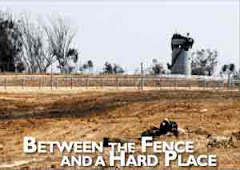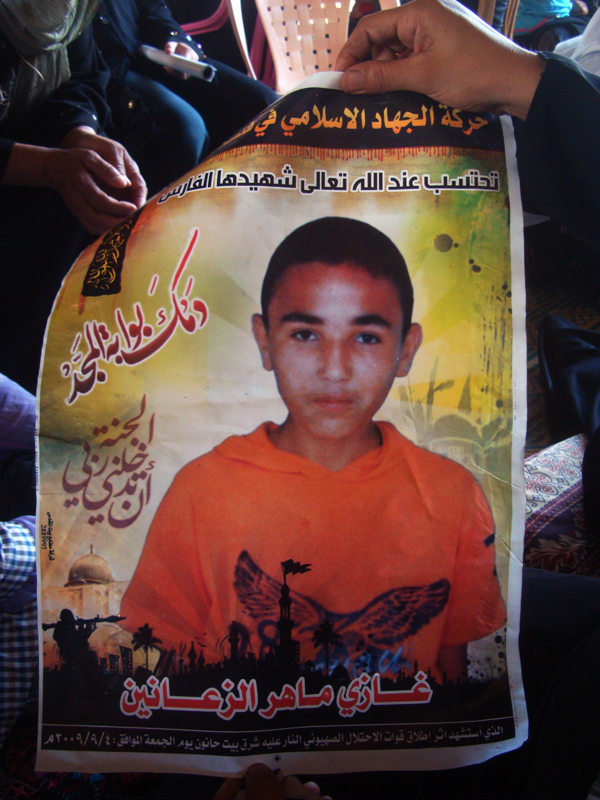Filed under: Uncategorized
Leila Abu Dagga, along with her husband Jaber Rjila, was only on the roof of her house for a few minutes before the Israeli soldiers started shooting.
“It was just after 12 noon,” Rjila said. “We were trying to move the asbestos tiles on the roof to cover some holes,” he explained. In May 2008, the farmhouse, just under 500m from the border, was severely damaged by invading Israeli soldiers. In tanks and bulldozers, the Israeli soldiers razed the farmland and fruit and olive trees, also destroying the chicken barn and 2500 of the 3000 chickens within. Soldiers also destroyed two tractors, other farm equipment, and much of the house’s infrastructure.
During Israel’s war on Gaza, the Rjila house sustained further damage from Israeli shelling and shooting, including the asbestos tiles covering the house and chicken barn.
After each attack and the many shooting incidents from the border, Jaber Rjila has patched and mended his broken home, determined to live in it.
On April 10, the couple attempted to repair the roof enough to move back in with their 6 children. Since November 2008, when the Israeli soldiers’ shooting from the border became dangerously unbearable, the family has been living in a rented house in town. With 6 kids to feed and their school expenses, the house rental (~$100/month) is too much for the no-income family.
“After about 5 minutes, we saw 3 Israeli army jeeps appear along the border. One jeep pulled up onto a slight rise and parked. The soldiers began shooting at us. We ran to the stairs, and as we were trying to escape, Leila fell down the stairs, breaking her foot,” Jaber Rjila recounted.
Leila Abu Dagga has walked with a limp since she was 15, when she was shot in her right leg by Israeli soldiers at a demonstration during the first Intifada. “Three Israeli jeeps came into the school grounds and soldiers began throwing tear gas at the students,” Rjila said. “Leila ran up to one soldier and tried to knock his gun down, so he wouldn’t shoot the students,” he continued. “A second soldier turned his gun on her and shot.” Leila survived with a bad leg and her friend was martyred.
She wasn’t hit by Israeli soldiers’ bullets yesterday, but her broken foot is a direct result of their shooting. Others have been less fortunate, including farmers and civilians killed and injured while working on their land, or simply while living on it.
“We took her to Khan Younis’ Nasser hospital,” Rjila said, gesturing to his wife’s cast-covered foot. “She was treated, but we didn’t get crutches. We don’t know why.”
Calling around later to find crutches for Abu Dagga, it becomes clear that there is a shortage of them in some hospitals. The crutch trail has led to a few possible sources which, if open tomorrow, could ease Leila Abu Dagga’s coming weeks of rehabilitation. With her right leg already long-injured and the fresh injury to her left foot, she faces a drawn-out period of immobility.
The contrast of life in the ‘buffer zone’ –where the Israeli military can shoot, maim, and kill at will, and where the Israeli army destroys farmland and barns without repercussion –to that of agricultural land elsewhere in the world is stark. Each act of non-violent resistance, of living and life, becomes a gargantuan task with the odds stacked against the farmers and civilians who face the world’s 4th most powerful military. Farming encompasses a whole new depth of resistance in the Israeli-imposed ‘buffer zone’.




